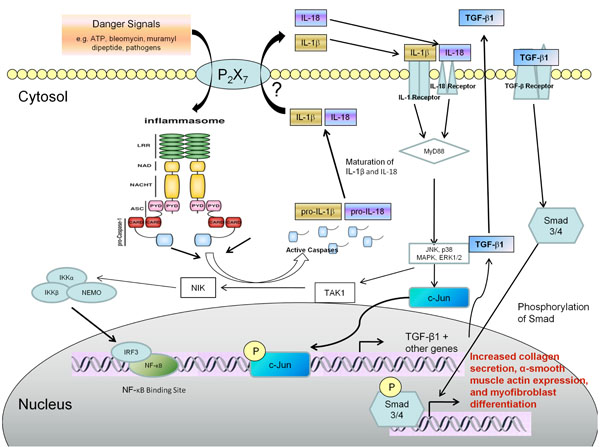Fig. (1) Autocrine signaling of IL-1β or IL-18 mediated by an activated inflammasome could promote myofibroblast differentiation
and collagen deposition leading to fibrosis. Danger signals such as bleomycin, muramyl dipeptide, and various pathogen-related danger
signals induce the assembly of the inflammasome. Once assembled the inflammasome mediates the cleavage of caspase-1 into its active
form. Caspase-1 is then able to proteolytically cleave pro-IL-1β and pro-IL-18 to their mature active forms and these cytokines are secreted
from the cell via a mechanism that is not fully understood. Both active IL-1β and IL-18 can autocrine signal in the fibroblast to upregulate
p38 MAPK, JNK, and ERK1/2 signaling pathways resulting in increased gene expression e.g. TGF-β1 and other profibrotic genes. Active
TGF-β1 is secreted from the cell and this in turn could autocrine signal to stimulate further collagen synthesis and increased α-smooth
muscle actin incorporation into stress fibers that are indicative of myofibroblast differentiation.


